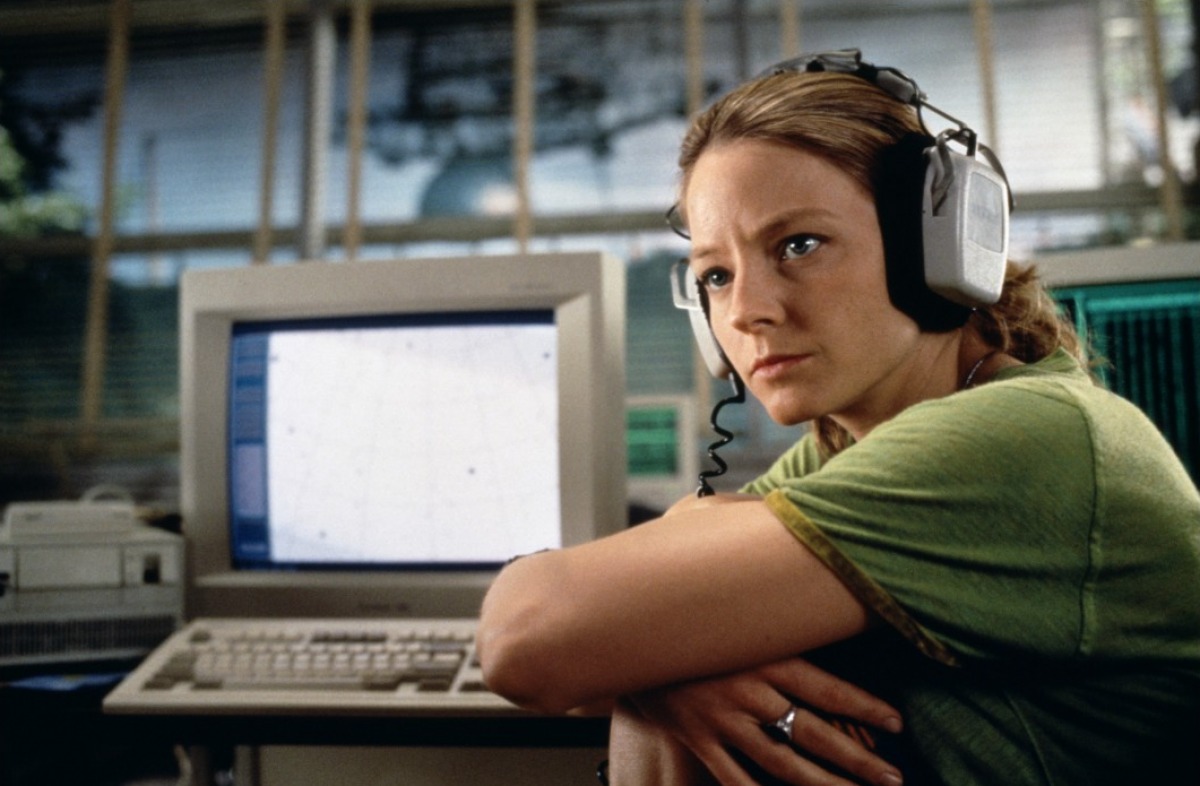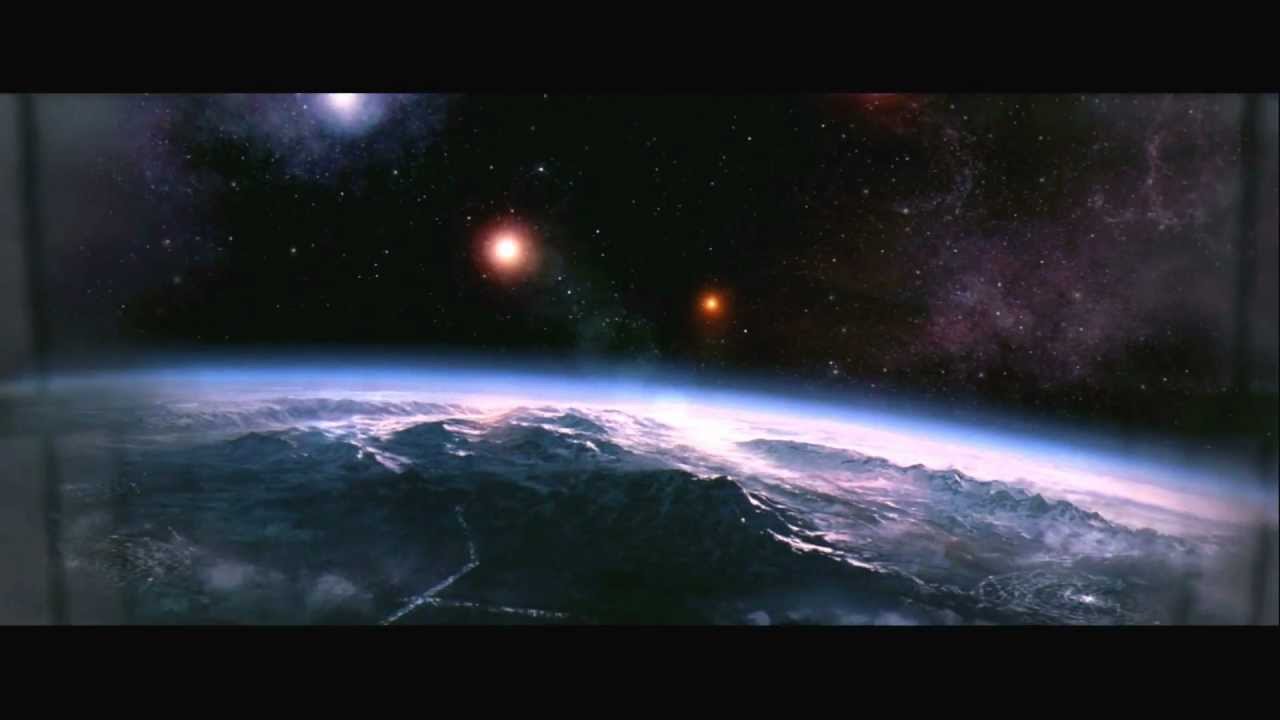What is the place of 1997’s Contact in the public consciousness? I’ve never been able to get a solid lock on it. It wasn’t one of the 90s movies that permanently took up residence on basic cable, but it’s a common enough experience that people can make jokes about it. (Go search on Twitter for “they should have sent a poet” if you don’t believe me.)
The entire film is in the shadow of Carl Sagan: it is an adaptation of his 1985 novel, which itself was essentially the novelized form of a 100-page film treatment he and his wife tried and failed to get made in the late 70s. What we end up with, then, in Contact is a 70s conception of science and religion that was released just years away from the 21st century.
The figures who have attempted to set themselves up as the “heirs” of Sagan — Neil deGrasse Tyson is the major name, having made his own version of Cosmos, but any number of popular-level scientists, usually with somewhat dubious credentials, have tried to position themselves in his wake — are often so insufferable and odious that it’s hard to remember Sagan’s actually very human project. One can’t imagine a New Atheist version of this story.
 They would, of course, have no trouble with Jodie Foster’s fiercely atheist logical fact-based Occam’s razor-referencing protagonist for most of the movie. And Matthew McConaughey’s vaguely Christian “spiritual advisor” could stay mostly intact, if only because many would see him as so obviously wrong today.
They would, of course, have no trouble with Jodie Foster’s fiercely atheist logical fact-based Occam’s razor-referencing protagonist for most of the movie. And Matthew McConaughey’s vaguely Christian “spiritual advisor” could stay mostly intact, if only because many would see him as so obviously wrong today.
But it’s Contact‘s famous final sequence, in which Foster finally does travel to the alien planet trying to contact Earth — but in a way that makes it seem as if she hadn’t, leading James Wood’s conspiracy-minded bureaucrat to accuse her of fabricating it — that the film takes a surprising position, one which would not sit well with the modern pop science world.
 Foster admits that there is no evidence she traveled to a foreign planet, but, borrowing language from McConaughey’s earlier description of his religious experience, she stands by her experience. It’s a wonderful scene, and if I were ever teaching a class on Hume’s argument against miracles, it would be exactly the scene to use.
Foster admits that there is no evidence she traveled to a foreign planet, but, borrowing language from McConaughey’s earlier description of his religious experience, she stands by her experience. It’s a wonderful scene, and if I were ever teaching a class on Hume’s argument against miracles, it would be exactly the scene to use.
But it bears some further thought. For the entirety of Contact, Foster has been the figure of what we would now call “scientism,” an absolute belief in testable, verifiable hypotheses. In other words, she basically stands in for every goofball on YouTube who rants about “evidence” and “proof” in an incredibly vague way, as if they were independent forces on their own.
But in the final moments of the film she is admitting that everyone’s experience is different — and that science should not reject or ignore personal experience. It would be a remarkable argument.
 And yet, they can’t stick with it. Slipped in between the climactic scene and the final credits is one last conversation between Woods and a minor assistant. (Woods, by the way, may have been hit on the head during filming and may have been stuck in this persona ever since.) It is revealed that while the camera did only record static during Foster’s visit, it “recorded 17 hours of static”, a fact that the government is hushing up.
And yet, they can’t stick with it. Slipped in between the climactic scene and the final credits is one last conversation between Woods and a minor assistant. (Woods, by the way, may have been hit on the head during filming and may have been stuck in this persona ever since.) It is revealed that while the camera did only record static during Foster’s visit, it “recorded 17 hours of static”, a fact that the government is hushing up.
In other words: Foster is right, and there is objective, falsifiable proof backing her up. (Why, by the way, 17 hours? It was established earlier that it would take half a century to travel to the planet and back, and that Foster was essentially giving up on Earth by traveling; if it took any time at all, why would it take 17 hours? The way this makes mincemeat of the logic of the dilemma points to the fact that this scene is somehow psychologically necessary for the creators.)
So the film tries to take a perspectivist approach — that we are ultimately locked only in our particular perspectives and experiences — while also judging one side objectively correct. What else could better encapsulate the cult of science we see in 2018 — or, for that matter, the evangelical Christian cult in 2018? The idea that we are both living in a world fractured into an infinity of perspectives, but also that some are objectively right, is the motivating factor behind the bludgeoning and aggressive techniques of both sides of the science/religion debate.
It’s what a psychoanalyst would call the hysterical objection: it’s impossible, and it’s wrong. It’s impossible to understand anyone else’s experience, and it’s wrong to do so because they’re wrong anyway.
Contact is a remarkable movie (at the very least, it’s the only Zemeckis movie post-Death Becomes Her I can sit through). It may be a last hurrah of sorts for a century in which it was fitfully believed that science and religion could say anything to each other. But in its final moments, it points to the future.

